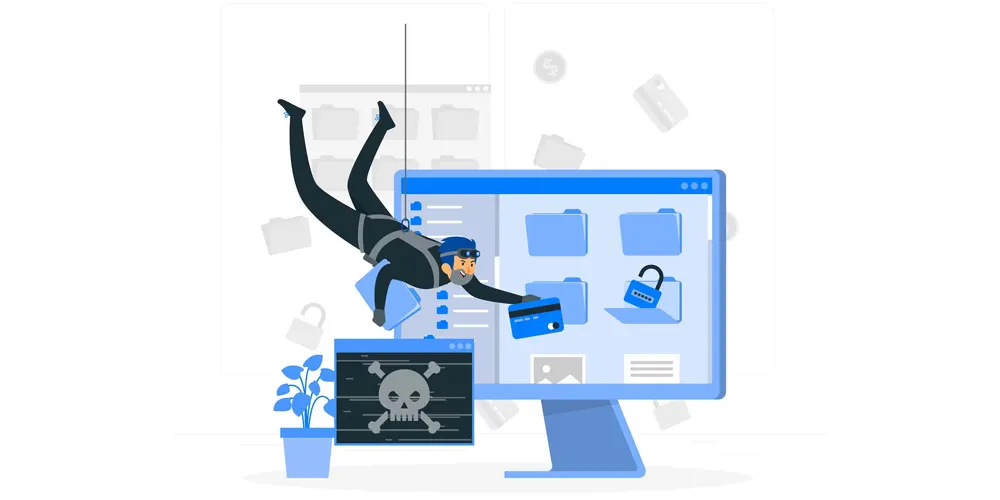How to Prepare for a VoIP Network Security Audit
Audits of any form can be an intimidating affair. There are so many things to get done and you have to get them all done in the right way. There are so many people involved and so many tools have to be used to achieve the desired results.
Thankfully, the insights these audits deliver are well worth the effort that is put in. Network Security Audits benefit a VoIP carrier in multiple ways. They don't just bolster the network security but also help to better the overall efficiency of the network.
So, to get the VoIP Network Security Audit right, you need to ensure you prepare to conduct the audit in the best way possible.
Starting on the right foot and with everything you need eliminates a lot of hurdles even before the Audit begins. We shall discuss the important steps in the preparation process for a VoIP Network Security Audit in this blog.
By the end of this blog, you will know every important thing when it comes to preparation for the audit. Let’s get started then!
Finalize Objectives and Outline the Scope of the Audit

Tackling any problem without a proper plan will never yield the results that you may seek. Thus, you need to plan and you begin a plan with finalizing the objectives and outlining the scope of the audit.
We shall cover these two aspects in more detail in a different blog. In this one, we shall concentrate on the preparations.
Setting clear objectives and outlining the scope of a VoIP network security audit for a VoIP carrier is essential for several key reasons:
1. Clarity of Purpose: Objectives define what the audit aims to accomplish. Whether it's identifying vulnerabilities, evaluating compliance, or strengthening incident response.
This clarity ensures that the audit team's efforts are aligned with the carrier's specific security needs and goals.
2. Resource Allocation: Knowing the audit's objectives and scope helps in allocating the right resources. This includes personnel, time, and budget. It ensures that resources are used efficiently to achieve the audit's goals.
3. Preventing Misunderstandings: Outlining the scope clearly defines what is included and what is not within the audit's purview. This prevents misunderstandings or gaps in assessment, ensuring that all critical network components and processes are examined.
4. Comprehensive Assessment: A well-defined scope helps ensure that no crucial security aspects are overlooked. It enables a thorough examination of the entire network infrastructure, from devices and configurations to policies and procedures.
5. Measuring Success: Clear objectives provide a basis for measuring the audit's success. After completion, the audit's outcomes can be compared against the initially set objectives to determine whether they were achieved or not.
6. Strategic Alignment: Objectives and scope are essential for aligning the audit with the carrier's broader security strategy. They ensure that the audit contributes directly to the carrier's security goals, helping enhance their overall security posture.
7. Communication and Collaboration: Clearly defined objectives and scope facilitate communication and collaboration among audit team members, stakeholders, and management.
In summary, setting objectives and outlining the scope of a VoIP network security audit is pivotal for its success. Now that you’re clear on this point, we can move on to the next important process.
Identifying Key Stakeholders

The key internal stakeholders primarily include individuals and teams within the organization who have a direct interest and responsibility for the security and functionality of the network.
These internal stakeholders may include:
Audit Participants
These include everyone who plays an active role in conducting the VoIP network security audit. Everyone has a clear responsibility and is responsible for the completion of specific objectives.
The Network Security Team

The Network Security Team takes charge of planning and coordinating the audit, conducting a comprehensive vulnerability assessment, and performing penetration testing to simulate potential cyberattacks.
Their responsibilities extend to monitoring network traffic for anomalies, reviewing device configurations, and meticulously analyzing security logs for signs of unauthorized activities.
The team also assesses the effectiveness of security policies and procedures. They also test the organization's incident response capabilities and document all findings.
Furthermore, they provide vital recommendations for security enhancements, work collaboratively to remediate vulnerabilities, and participate in ongoing efforts to strengthen the network's security posture.
Ultimately, the Network Security Team's expertise and actions ensure the integrity and reliability of VoIP services by identifying and mitigating potential security risks.
IT Department

The IT department provides vital technical support, assists in data gathering, and helps validate the network's configurations and adherence to security policies.
The IT team collaborates with the audit group in conducting network testing, monitoring logs, and analyzing traffic data to detect potential vulnerabilities or security breaches.
Their involvement extends to incident response readiness, patch management, and security awareness training for employees.
Post-audit, the IT department actively participates in addressing identified vulnerabilities, conducting retesting, and contributing to ongoing improvements in network security practices.
In essence, their technical expertise and cooperation are instrumental in safeguarding the VoIP carrier network's integrity and ensuring the reliability of VoIP services.
Network Engineers

Network engineers play a critical role during a VoIP carrier's network security audit. Their primary responsibility is to provide technical expertise related to the network's architecture, configuration, and operation.
They collaborate closely with the network security team to evaluate the network's design, ensuring it aligns with best security practices. Network engineers also identify potential vulnerabilities in the network devices and work on optimizing access controls.
They also contribute by assessing network performance and traffic management to ensure that Quality of Service (QoS) mechanisms are effectively prioritizing voice traffic.
Their insights and technical knowledge are invaluable in identifying security weaknesses and implementing security controls.
Compliance Officers

Their primary responsibility is to ensure that the audit aligns with all relevant regulatory requirements, industry standards, and internal compliance mandates.
They meticulously review the audit process to confirm that it adheres to legal obligations and contractual commitments. Compliance officers also work closely with the audit team to identify any areas where the network may fall short of compliance.
They ensure that the VoIP carrier's security practices not only meet but also exceed the necessary compliance benchmarks. This reduces legal and regulatory risks and promotes adherence to industry best practices.
Stakeholders with Vested Interest
The other group of Key Stakeholders consists of people who have a vested interest in the outcome of the VoIP Network Security Audit. This group is non-participant in the auditing process but is directly impacted by the outcome.
These stakeholders can be broadly classified under the following two groups.
Management and Executives

Management and executives in a VoIP carrier hold a critical role and vested interests in a network security audit. Their primary role is to provide strategic direction and support throughout the audit process.
They allocate the necessary resources, including budget and personnel, to ensure the audit is comprehensive and effective. Their vested interests lie in safeguarding the organization's reputation, customer trust, and revenue streams.
Management and executives are deeply concerned about the potential risks posed by security vulnerabilities. These risks can lead to service disruptions, data breaches, and regulatory fines.
They are also committed to maintaining compliance with industry regulations and standards. Which can impact the organization's market presence and competitive edge.
Therefore, their active involvement ensures that the audit findings are acted upon promptly. Thus, security enhancements will be implemented to mitigate risks and protect the organization's interests.
Employees and Users

Users and employees have a crucial role and vested interests in a VoIP carrier's network security audit.
Their role includes adhering to security protocols and best practices during the audit period, promptly reporting any security concerns, and cooperating with security awareness training.
Their vested interests align with the desire for a secure and reliable VoIP service. Users want to ensure their communications are private and uninterrupted.
Employees are invested in maintaining the integrity of their workplace and the organization's reputation.
Both groups have a shared interest in protecting sensitive data. This includes customer information, from unauthorized access or data breaches.
Additionally, compliance with security measures not only safeguards their interests but also contributes to a secure working environment.
With that, you should have a clear idea about who is needed to conduct the audit and who will benefit from its outcome.
With people taken care of, you need to take a look at the tools and resources the VoIP Network Security Audit may require.
Gathering the Necessary Tools and Resources for the Audit
Here are some of the tools and resources that a wholesale VoIP carrier will need to conduct a security audit of their network.
Vulnerability Assessment Tools

A Vulnerability Assessment Tool used in network security audits is a software tool designed to systematically scan a network for potential security weaknesses, misconfigurations, and vulnerabilities.
It automates the process of identifying areas of risk within the network infrastructure, including devices, servers, and software applications.
The tool assesses the network against known vulnerabilities and security best practices, providing a detailed report of the issues discovered.
This information helps security professionals prioritize and address vulnerabilities. This in turn helps enhance the overall security posture of the network and reduces the potential for security breaches and cyberattacks.
Suggested tools - Nessus, OpenVAS, QualysGuard
Packet Capture Tool

A packet capture tool captures and analyzes data packets as they travel across a network. It provides detailed insights into network traffic, including the types of data being transmitted and the source and destination of packets.
This information is crucial for assessing network security. It allows auditors to detect anomalies, unauthorized access, or suspicious activities that might indicate security breaches or vulnerabilities.
Packet capture tools help in monitoring network behavior, identifying potential threats, and ensuring that data is transmitted securely. This makes them a valuable asset in network security assessments.
Suggested tools - Wireshark, tcpdump, ngrep
Intrusion Detection System (IDS)

An Intrusion Detection System (IDS) is a software or hardware tool designed to monitor network traffic and identify suspicious or potentially malicious activities.
It works by analyzing network packets and comparing them against predefined patterns or signatures of known threats. When it detects unusual or unauthorized behavior, it generates alerts to notify security personnel.
IDS helps in real-time threat detection, enabling timely responses to security incidents during network security audits.
It's a critical component for identifying and mitigating potential security risks, enhancing network security, and safeguarding against cyberattacks.
Suggested tools - Snort, Suricata, Bro
Intrusion Prevention System (IPS)

An Intrusion Prevention System (IPS) is a security tool designed to not only detect suspicious or potentially malicious activities on a network but also take automated actions to prevent or mitigate them.
The IPS tool analyzes network traffic in real-time, similar to an Intrusion Detection System (IDS). However, it goes a step further by actively blocking or halting malicious activities, such as unauthorized access attempts or known attack patterns.
It's a proactive defense mechanism that helps protect the network by automatically responding to security threats. Which makes it another valuable asset in network security assessments.
Suggested tools - Sourcefire, Palo Alto Networks, Fortinet
Security Information and Event Management (SIEM) System

A Security Information and Event Management (SIEM) system is a comprehensive software solution that collects and correlates security-related data and events from various sources across a network.
It provides a centralized platform for monitoring, analyzing, and responding to security incidents. SIEM systems offer real-time visibility into network activities. This helps auditors identify potential security threats and anomalies.
They enable the aggregation of data from logs, devices, and applications. This makes it easier to detect and investigate security incidents during network security audits.
SIEM systems are essential for enhancing the overall security posture of a network by facilitating threat detection, incident response, and compliance management.
Suggested tools - Splunk, ArcSight, IBM QRadar
Security Awareness Training

Security awareness training is an educational program designed to educate employees and users about security threats, best practices, and the organization's security policies and procedures.
This training is required to enhance security awareness among individuals interacting with the network. The risk of human error or negligence that could lead to security breaches can thus be significantly reduced.
It ensures that employees and users are well-informed about potential security risks and know how to recognize and respond to security threats effectively.
Security awareness training is a fundamental aspect of network security audits. It helps organizations strengthen their security culture and safeguard against cyber threats.
Suggested resources - KnowBe4, SecurityMetrics, SANS Institute
Incident Response Plan

An incident response plan is a structured set of procedures and actions an organization follows when a security incident occurs.
It outlines steps for detecting, reporting, assessing, and responding to security breaches and cyberattacks. The plan is crucial for minimizing damage, restoring services, and preventing future incidents.
During network security audits, the effectiveness of the incident response plan is evaluated to ensure the organization is well-prepared to handle security incidents.
This helps to mitigate the impact of network security-related mishaps and maintain the integrity and reliability of network services.
These were the necessary tools required to conduct any VoIP Network Security Audit effectively. As security auditors, you may even choose to use additional tools to ensure an even higher level of safety and security.
Suggested resources - CERT.org, SANS Institute, NIST
With that, we’ve covered everything a VoIP Carrier needs to prepare for before conducting a VoIP Network Security Audit. Let’s conclude then!
Conclusion
There’s a lot that needs to be in place to conduct an effective VoIP Network Security Audit. You need the right people, tools, and resources to start with and then you need a good plan.
Organizing everything properly will ensure your audit is executed smoothly and yields the expected level of insights about your network.
Armed with these insights, you can initiate fixes to all the observed vulnerabilities. Once all these weak points are patched, you have yourself a safer network!
























































































































